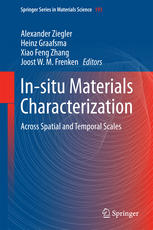

Most ebook files are in PDF format, so you can easily read them using various software such as Foxit Reader or directly on the Google Chrome browser.
Some ebook files are released by publishers in other formats such as .awz, .mobi, .epub, .fb2, etc. You may need to install specific software to read these formats on mobile/PC, such as Calibre.
Please read the tutorial at this link: https://ebookbell.com/faq
We offer FREE conversion to the popular formats you request; however, this may take some time. Therefore, right after payment, please email us, and we will try to provide the service as quickly as possible.
For some exceptional file formats or broken links (if any), please refrain from opening any disputes. Instead, email us first, and we will try to assist within a maximum of 6 hours.
EbookBell Team

4.3
58 reviewsThe behavior of nanoscale materials can change rapidly with time either because the environment changes rapidly or because the influence of the environment propagates quickly across the intrinsically small dimensions of nanoscale materials. Extremely fast time resolution studies using X-rays, electrons and neutrons are of very high interest to many researchers and is a fast-evolving and interesting field for the study of dynamic processes. Therefore, in situ structural characterization and measurements of structure-property relationships covering several decades of length and time scales (from atoms to millimeters and femtoseconds to hours) with high spatial and temporal resolutions are crucially important to understand the synthesis and behavior of multidimensional materials. The techniques described in this book will permit access to the real-time dynamics of materials, surface processes and chemical and biological reactions at various time scales. This book provides an interdisciplinary reference for research using in situ techniques to capture the real-time structural and property responses of materials to surrounding fields using electron, optical and x-ray microscopies (e.g. scanning, transmission and low-energy electron microscopy and scanning probe microscopy) or in the scattering realm with x-ray, neutron and electron diffraction.